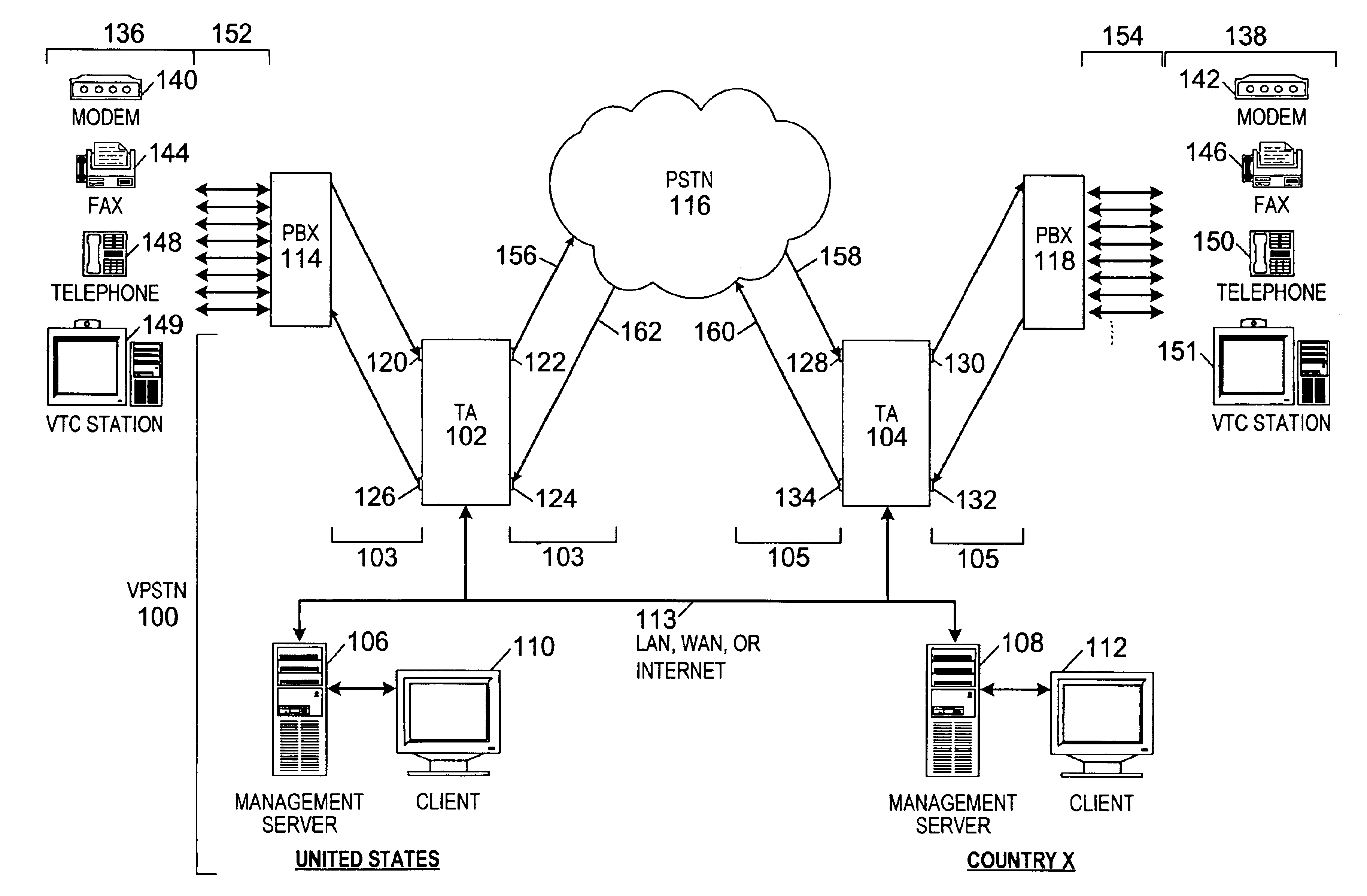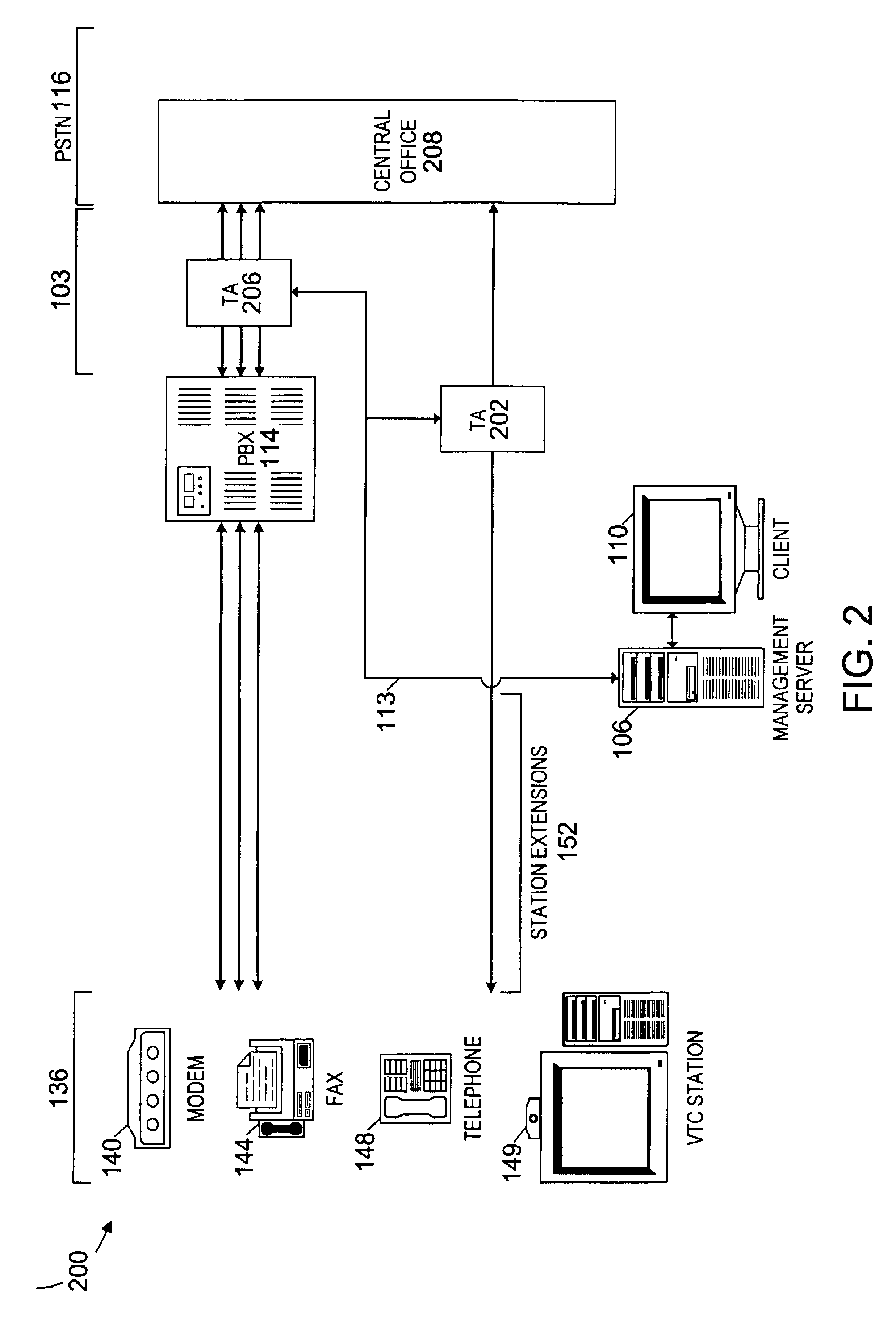Virtual private switched telecommunications network
a virtual private switched and telecommunications network technology, applied in the field of telecommunication access control systems, can solve the problems of untrusted pstn data vpn, inability to protect voice, fax, modem and video calls over the untrusted pstn, and the vast majority of calls occurring between users
- Summary
- Abstract
- Description
- Claims
- Application Information
AI Technical Summary
Benefits of technology
Problems solved by technology
Method used
Image
Examples
Embodiment Construction
The present invention can be described with several examples given below. It is understood, however, that the examples below are not necessarily limitations to the present invention, but are used to describe typical embodiments of operation.
Virtual Private Switched Telecommunications Network
FIG. 1 is a schematic block diagram of an exemplary Virtual Private Switched Telecommunications Network (VPSTN) 100 of the present invention, similar to the telecommunications firewall implemented as shown and described in U.S. patent application Ser. No. 09 / 210,347, now U.S. Pat. No. 6,249,575 B1. The VPSTN 100 can be combined with the telecommunications firewall to act as an integrated VPSTN 100 and a firewall simultaneously, or to result in a mixture of capabilities of each device.
The VPSTN 100 includes at least two in-line devices such as Telephony Appliances (TA) 102 and 104, management servers 106 and 108, and clients 110 and 112, all interconnected by a Transmission Control Protocol / Intern...
PUM
 Login to View More
Login to View More Abstract
Description
Claims
Application Information
 Login to View More
Login to View More - R&D
- Intellectual Property
- Life Sciences
- Materials
- Tech Scout
- Unparalleled Data Quality
- Higher Quality Content
- 60% Fewer Hallucinations
Browse by: Latest US Patents, China's latest patents, Technical Efficacy Thesaurus, Application Domain, Technology Topic, Popular Technical Reports.
© 2025 PatSnap. All rights reserved.Legal|Privacy policy|Modern Slavery Act Transparency Statement|Sitemap|About US| Contact US: help@patsnap.com



